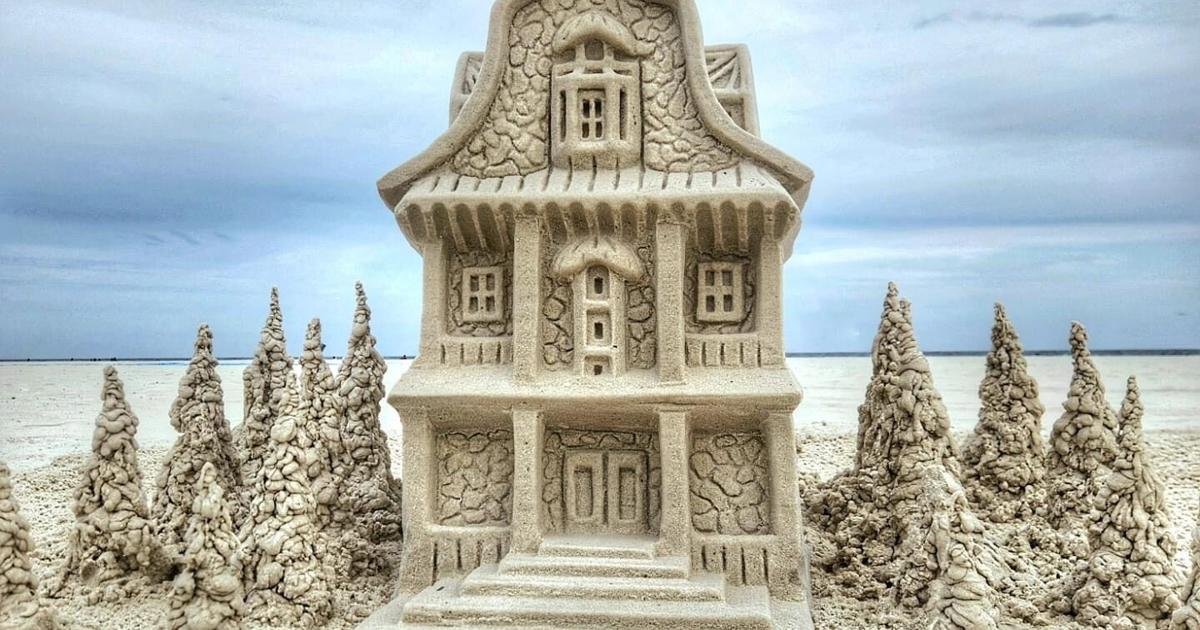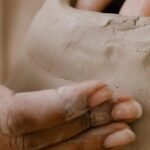
If you live near a beach, chances are you and your kids have hauled sloshing buckets of seawater to build sandcastles. While visions of turrets, moats, and intricate brickwork might feel out of reach, a unique “university” in Gulf Shores, Alabama, is turning those dreams into reality. This is especially exciting with the Folly Beach Sea and Sand Festival on the horizon, featuring a sand sculpting competition on Sunday, Feb. 23.
This year marks the 33rd year of the Folly Beach Sea and Sand Festival on Feb. 22-23, a weekend filled with music, food, crafts, live surfboard painting competitions, a rodeo shark, and a sandcastle building competition. Kid areas will feature jump castles, stilt walkers, spin art, face painting, aerial performers, bubbles, and juggling. The city is expecting 5,000 attendees for Salty Saturday alone.

Janel Hawkins, a professional sand sculptor and owner of Sand Castle University, offers tips for anyone looking to improve their sand sculpting skills and entering in the sand building competition.
Janel got the sandcastle bug as a junior in college and decided to open her own business creating custom sculptures for proposals, weddings, corporate logos, festivals and other events.
Q: What basic tools should beginners bring to the beach for sand sculpting?
A: For a beginner sandcastle:
- Start with a 5-gallon paint bucket with the bottom cut out to make a “tube” for the sand tower.
- A smaller bucket for hauling water
- A small shovel to fill your form with sand
- Measuring spoons to scoop out windows and doors
- Small pallet knives (plastic is fine) for making stairs and for carving bricks and cobblestones
- A soft chip brush (found in the paint department) to brush loose sand – or mistakes – away.
Q: What are some common mistakes beginners make?
A: Building where the sand is already wet. It’s actually terrible sand, gritty, mixed with marbles and shells that don’t absorb or hold water. It’s better to use the fluffier sand further away from the water and bring the water to it.
Another common mistake is not using enough water and not properly mixing the sand and water in the form. Without enough water and mixing, you won’t end up with a fully complete, strong tower when pulling off the form.

The Sea and Sand Festival Sand Sculpting Competition will be held Sunday, Feb. 23, in the morning at the Tides on Folly Beach.
Q: Is there an ideal water-to-sand ratio for building sturdy sand sculptures?
A: Using soft, fluffy dry sand, it’s about half and half. We like to say that “water is glue” for a sand sculpture and when in doubt, use more water, not less. The sand absorbs the water pretty quickly while mixing. Once it is mixed, keep your hands off and go on to the next layering step.
Q: How can families protect their sculptures from collapsing or crumbling as they work?
A: If you have built a strong form and work gently from top to bottom, it typically won’t collapse or crumble before you are finished. 45 minutes to an hour is a good completion time to keep a small beginner sculpture intact. Since some of my sculptures take 5-6 hours to complete, I spray it with water while carving. Keep in mind that anything other than a very light spray will erode all your hard work! Remember that sand sculpting is a temporary art form.
Q: What’s the best way to repair a sculpture if part of it breaks or falls apart?
A: If a little bit breaks while you are sculpting, most times you can use the wet-sand-plopping method to gently add the sand back to the structure, holding it in place and patting it to compact. And other times, you can use that opportunity to pivot or adjust, making a staircase where you didn’t plan to have one. It’s always good to give yourself a bit of grace. For this reason, there are no mistakes in sand sculpting!
Q: What’s your top piece of advice for families who want to enjoy sand sculpting together?
A: I would have to say be patient, don’t take yourself too seriously, and remember that everyone does things differently – that’s part of the fun! Plus, it goes without saying: practice, practice, practice!

This sea turtle sand sculpture was designed by Janel Hawkins, owner of Sand Castle University.
Q: How can sand sculpting be a great way to foster creativity, teamwork, and fun for all ages?
A: I think playing in the sand is a great outdoor activity, getting everyone away from screen-time for a short while. We subscribe to the idea that “when your hands are busy, your mind can rest” and that makes sand play a truly valuable art therapy.
Q: Any other practical advice?
A: During sea turtle season, we always knock our sculptures down so as not to impede mama turtles coming in to nest or later on, the babies from crawling out to sea. For this same reason, we never dig holes while sculpting. Instead, we shovel the top layer of sand all the way around our structure.
Q: What inspires your sand sculptures?
A: I am inspired by architecture for the most part. In my free time, I like to sculpt detail more than size. I will see an interesting building or house and take a photo, knowing that it will be a fun thing to sculpt in sand. Otherwise, I sculpt what I love: sea turtles and other animals. I recently did a sculpture for the SpongeBob Saving Bikini Bottom movie and since I love SpongeBob, it was really fun to recreate some of those habitats.
To register for the sand sculpting competition, click here.
Feb. 22: Salty Saturday: Center Street will be closed and taken over by local vendors, restaurants, and bars from 10 a.m. to 4 p.m. and feature local bands, activities and a kids’ area. Admission is $10 in advance ($15 at the door) but free for Folly residents and kids 12 and under are free. To register for the live surfboard painting competition, click here.
Feb. 23: Sand Sculpting Competition: 9 a.m. – 12:30 p.m. at the Beachfront Tides Hotel, 1 Center Street, Folly Beach











